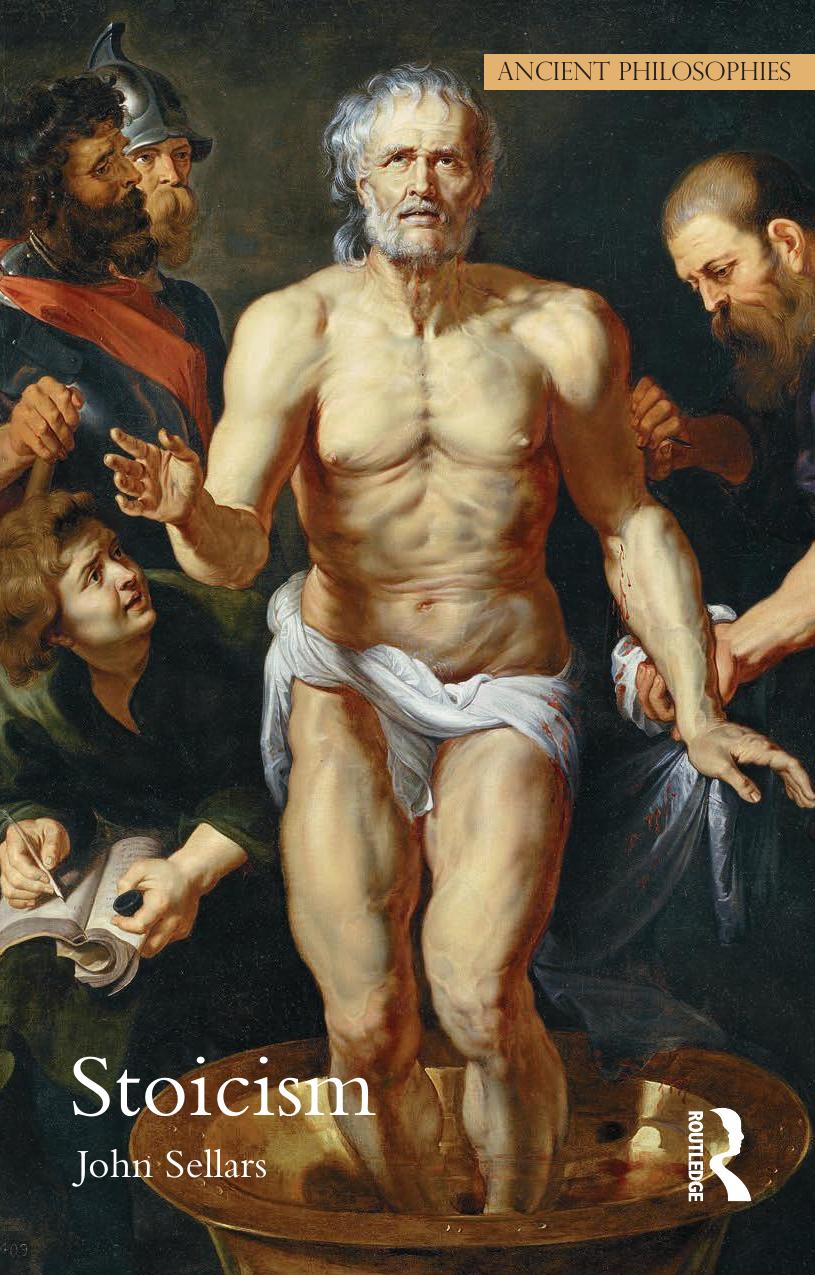Stoicism by Sellars John

Author:Sellars, John [John Sellars]
Language: eng
Format: epub, pdf
ISBN: 9781317493907
Publisher: Taylor and Francis
We can schematize this process as follows: For the cosmos to develop all of its myriad forms, all four of the elements are required. Yet if the fire out of which all of the other elements are generated is elemental fire, then why do we need this final stage in which the thin part of moisture is rarefied into fire? An answer to this would be to say that the initial fire is not elemental fire, but rather some other form of fire, to be identified with God, and later described as pneuma.
Indeed, Aetius (1.7.33) reports that the Stoics described God as a “creative fire” (pur technikon), and he suggests that this is the same thing as the pneuma pervading the cosmos. It is necessary to draw a distinction, then, between the creative fire out of which the cosmos is born and elemental fire, which stands alongside the other elements of air, water and earth. Stobaeus, reporting Arius Didymus, confirms this distinction: “There are two kinds of fire: one is uncreative and converts fuel into itself; the other is creative, causing growth and preservation” (Stobaeus 1,213,17–19). The cosmos is born out of this creative fire, and it is resolved back into this creative fire at the end of its life cycle, the moment of conflagration. At that moment, the cosmos is pure fire, that is, pure pneuma. The cosmic animal will be pure soul, without body (see Plutarch, St. Rep. 1053b). This implies that at the moment of conflagration the cosmos will be pure active principle, the passive principle having been in some sense converted into active principle, and awaiting conversion back again. It is not clear how the Stoics thought that they could justify this claim.
After the conflagration the cosmos is reborn. It then passes through another life cycle, culminating in another conflagration. This process continues in an endless series of cycles. The life of the cosmos in each cycle is identical to its predecessor. The cosmos, governed by reason, has the best possible organization, and as there is only one best possible organization, this is repeated in each cycle. Thus, there is eternal recurrence of the same events. Rather than conceiving this as an endless series of cycles, one might instead conceive it as a single cycle, repeated endlessly.
Some later Stoics, notably Boethus of Sidon and Panaetius, rejected the doctrine of conflagration and instead held that the cosmos was indestructible and existed eternally (see e.g. DL 7.142).
Download
This site does not store any files on its server. We only index and link to content provided by other sites. Please contact the content providers to delete copyright contents if any and email us, we'll remove relevant links or contents immediately.
The remains of the day by Kazuo Ishiguro(8887)
Tools of Titans by Timothy Ferriss(8303)
Giovanni's Room by James Baldwin(7250)
The Black Swan by Nassim Nicholas Taleb(7054)
Inner Engineering: A Yogi's Guide to Joy by Sadhguru(6752)
The Way of Zen by Alan W. Watts(6548)
Asking the Right Questions: A Guide to Critical Thinking by M. Neil Browne & Stuart M. Keeley(5705)
The Power of Now: A Guide to Spiritual Enlightenment by Eckhart Tolle(5678)
The Six Wives Of Henry VIII (WOMEN IN HISTORY) by Fraser Antonia(5454)
Astrophysics for People in a Hurry by Neil DeGrasse Tyson(5151)
Housekeeping by Marilynne Robinson(4391)
12 Rules for Life by Jordan B. Peterson(4275)
Double Down (Diary of a Wimpy Kid Book 11) by Jeff Kinney(4240)
The Ethical Slut by Janet W. Hardy(4211)
Skin in the Game by Nassim Nicholas Taleb(4200)
Ikigai by Héctor García & Francesc Miralles(4172)
The Art of Happiness by The Dalai Lama(4089)
Skin in the Game: Hidden Asymmetries in Daily Life by Nassim Nicholas Taleb(3960)
Walking by Henry David Thoreau(3921)
